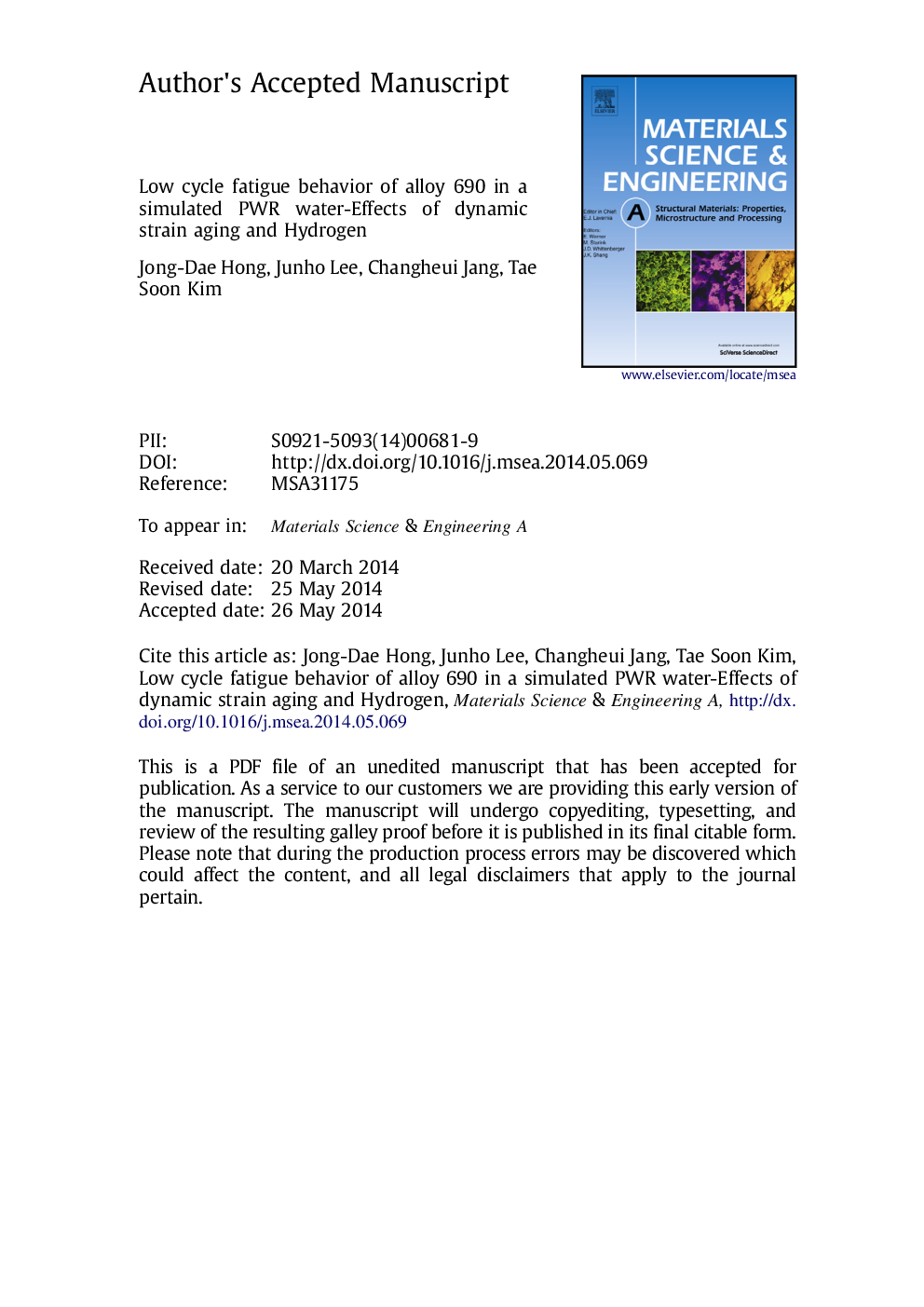| Article ID | Journal | Published Year | Pages | File Type |
|---|---|---|---|---|
| 7980991 | Materials Science and Engineering: A | 2014 | 31 Pages |
Abstract
Low cycle fatigue (LCF) tests of Alloy 690 were performed in air and simulated PWR water under various loading conditions, and the results were analyzed to understand the LCF behavior of Alloy 690 in PWR water. The LCF life of Alloy 690 was shorter in PWR water than in air; however, the degree of reduction was less significant than for austenitic SSs. Through the tests and subsequent analysis, it was observed that dynamic strain aging (DSA) and hydrogen evolution by metal dissolution near the crack tip affect the fatigue crack growth behavior in PWR water. While DSA was observed, its effect on the LCF life was not evident. A hydrogen-induced dislocation structure was observed near the crack surface in TEM micrographs, indicating the operation of hydrogen-induced cracking (HIC) in PWR water. However, due to improved corrosion resistance, HIC was less operative for Alloy 690 than for austenitic SSs during the LCF test in PWR water. Consequently, the LCF life of Alloy 690 was longer than that of austenitic SSs in PWR water.
Related Topics
Physical Sciences and Engineering
Materials Science
Materials Science (General)
Authors
Jong-Dae Hong, Junho Lee, Changheui Jang, Tae Soon Kim,
